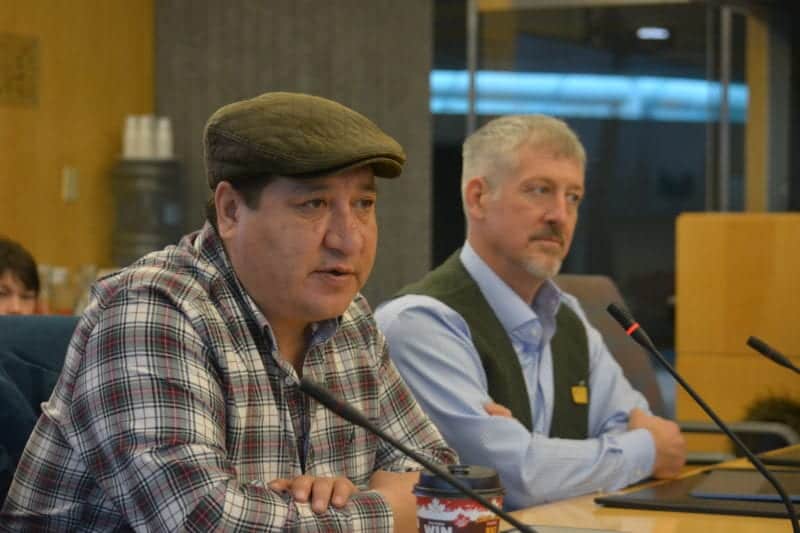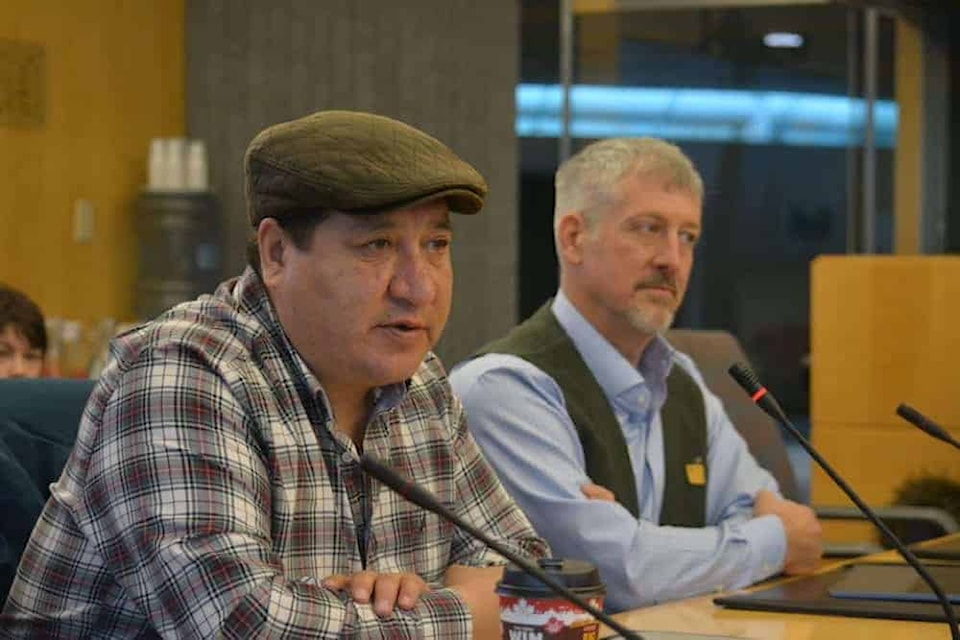Lutsel K’e Dene First Nation members voted in favour of designating Thaidene Nene as a national park reserve on Feb. 19.

Eighty-eight per cent of Lutsel K'e Dene First Nation (LKDFN) members supported a resolution to sign establishment agreements with the territorial and federal governments to turn Thaidene Nene into a park.
The LKDFN plans to sign the agreements in the spring.
The vote shows there is support for the vision of elders to protect Thaidene Nene, said LKDFN Chief Darryl Marlowe.
"We are now moving forward as a community to ensure that our way of life will thrive into the future," he said. "We will exercise our responsibility to take care of this land and protect the way of life of our people, and work together with our government partners on nation-to-nation basis to welcome visitors to our lands."
Thaidene Nene covers 26,308 square kilometres of land near the community of Lutsel K'e. The proposed park would contain a 12,000 square kilometre territorially protected area. Another 14,000 square kilometres would have federal National Park Reserve designation and would be closed to industrial development.

(GNWT fact sheet)
Thaidene Nene – Land of the Ancestors – is the homeland of the Lutsel K’e Denesoline people. Lutsel K’e is the gateway to Thaidene Nene, which transitions from boreal forest to tundra and holds ecological and cultural value.
The area boasts rising cliffs, islands and abundant freshwater. It provides habitat for moose, muskoxen, wolves, bears, wolverines and a range of bird and fish species. It also supports habitat for migratory barren ground caribou.
Protecting the area could see the NWT become a leader in the conservation economy, said Steven Nitah, lead negotiator for the LKDFN during an Oct. 17 committee meeting.
He urged swift action on the proposed territorial legislation that will guide the creation of Thaidene Nene and advance other proposed conservation areas.
Thaidene Nene holds promise as a model for some of the most “progressive” recognition of Indigenous jurisdiction and authority, he said.
Other jurisdictions are watching how to the GNWT is managing conservation planning, he said.
“Their eyes are on you,” said Nitah.
Protected Areas Legislation anticipated for winter session
There are several proposed conservation areas in the NWT, all of which will be governed by legislation developed by the Department of Environment and Natural Resources (ENR).
The legislation is planned for introduction in the winter session, said Michele Swallow, ENR manager of conservation, assessment and monitoring in a Nov. 14 interview with News/North.
The legislation will guide the transformation of candidate areas into protected areas and enable the creation of regulations for specific areas in a "timely manner." It also has a requirement for interim protections for new candidate areas while they’re being evaluated, said Swallow.
That legislation is critical to see Thaidene Nene move forward, said Nitah, said it should be quickly implemented.
“We are quite concerned that the GNWT may not be able to create legislation during the life of this assembly,” he told a committee meeting on Oct. 17.
Once introduced, the legislation must go through three readings and complete 120 days of review.
Thaidene Nene and other proposed protected areas like Dinaga Wek’ehodi on the North Arm of Great Slave Lake and Ts’ude niline Tu’eyeta, also known as the Ramparts west of Fort Good Hope will proceed according to the proposed protected areas legislation.
Ts’ude niline Tu’eyeta is designated under the Sahtu Land Use Plan as a proposed conservation initiative, protecting the area from industrial activity.
The recommended boundary for that proposed protected area is more than 10,000 square kilometres including areas of high ecological and cultural importance.
Nine per cent of the territory is under established protected areas. An additional 4.9 per cent makes up candidate protected areas, states the ENR website.
Thaidene Nene 50 years in the making
Thaidene Nene has been an area of interest for nearly 50 years. Parks Canada pursued the establishment of a national park reserve in the East Arm in the 1970s, with 7,340 square kilometres under an indeterminate land withdrawal.
Nearly 40 years later, the amount of land under interim land withdrawal has more than quadrupled.
Discussions between LKDFN, GNWT, Parks Canada and others with direct interests in Thaidene Nene continue.
If completed, the park will be closed to industrial development and will be subject to mixed management in partnership with Indigenous, federal and territorial governments.
It is expected to create at least 18 seasonal jobs in the community of Lutsel K'e and 10 year-round positions.
The LKDFN and its government partners will commit between $4 and $7-million annually on management and capital projects within Thaidene Nene.
